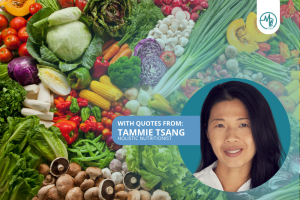When it comes to Middle Eastern cuisine, hummus and kabsa are two of the most popular dishes. While they are delicious and satisfying, many people wonder whether they are healthy for you.
Does middle eastern food provide enough protein? In this article, we will explore the nutritional benefits of hummus and kabsa, and discuss how you can make them even healthier.
Hummus: A Nutritious and Delicious Dip
Hummus is a dip made from cooked chickpeas, tahini (ground sesame seeds), olive oil, lemon juice, and garlic. It is high in protein and fibre and provides essential vitamins and minerals.
One serving of hummus (2 tablespoons) contains approximately 70-80 calories, making it a great snack option. It is also low in saturated fats and high in healthy unsaturated fats. Hummus is also a good source of iron, magnesium, phosphorus, and vitamin B6.
To make hummus even healthier, use a small amount of olive oil and avoid adding extra salt. You can also experiment with adding herbs, spices, or roasted vegetables for added flavour and nutrients.
Kabsa: A Flavourful Rice Dish
Kabsa is a rice dish that is popular in Saudi Arabia and other Arab countries. It is made with long-grain rice, chicken, lamb, or beef, and a blend of spices that includes cinnamon, cardamom, and cloves. It is often served with vegetables, such as tomatoes and carrots.
One serving of kabsa (1 cup) contains approximately 350-400 calories, depending on the meat and vegetables used. While kabsa is high in carbohydrates, it is also a good source of protein and fibre. The blend of spices used in kabsa also has many health benefits, including anti-inflammatory properties.
To make kabsa healthier, use brown rice instead of white rice to increase fibre content. You can also use lean cuts of meat and add more vegetables to the dish. Additionally, try reducing the amount of salt in the recipe or using low-sodium broth.
Shawarma: A Popular Middle Eastern Wrap
Shawarma is a wrap made with sliced meat, such as chicken or lamb, and vegetables wrapped in pita bread. It is often served with a variety of sauces, such as hummus, tahini, or garlic sauce.
One serving of shawarma (1 wrap) contains approximately 400-500 calories, depending on the ingredients used. It is high in protein and provides essential vitamins and minerals. However, it can also be high in sodium and unhealthy fats, especially if it is fried.
To make shawarma healthier, choose lean cuts of meat and avoid frying the meat. Use whole-grain pita bread and add more vegetables to increase fibre and nutrient content. You can also use low-fat sauces and avoid adding extra salt.
Baklava: A Sweet Treat
Baklava is a sweet pastry that is popular in many Middle Eastern countries. It is made with layers of phyllo dough, chopped nuts, and honey or syrup.
One serving of baklava (1 piece) contains approximately 300-400 calories, depending on the size and ingredients used. It is high in sugar and fat but also provides essential vitamins and minerals, such as calcium and iron.
To make baklava healthier, use less sugar or honey in the recipe. You can also use whole-wheat phyllo dough to increase fibre content. Additionally, try using healthy fats, such as nuts or seeds, instead of butter or margarine.
Falafel: A Vegetarian Delight
People make falafel by grinding chickpeas, herbs, and spices, forming them into balls or patties, and then either deep-frying or baking them. Falafel is a popular vegetarian dish, often served on pita bread with vegetables and sauces.
One serving of falafel (4 balls) contains approximately 300-400 calories, depending on the cooking method and ingredients used. Falafel is high in protein and fibre and provides essential vitamins and minerals, such as iron and magnesium.
To make falafel healthier, try baking instead of deep-frying the balls or patties to reduce the number of unhealthy fats. You can also experiment with using different types of beans or lentils for added variety and nutrient content. Additionally, try using whole-grain pita bread and adding more vegetables to increase fibre and nutrient content.
Conclusion
Hummus, kabsa, shawarma, baklava, and falafel are just a few examples of the many delicious and nutritious dishes found in Middle Eastern cuisine. While some of these dishes may contain high calories, a few simple adjustments can make them even healthier without sacrificing taste.
By choosing lean cuts of meat, using whole-grain bread and pastries, and adding more vegetables and herbs, you can enjoy your favourite Middle Eastern foods while also maintaining a healthy and balanced diet. So go ahead and indulge in these tasty treats while also taking care of your health and well-being.












